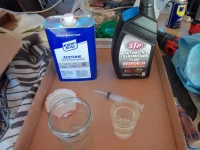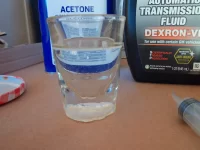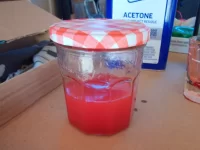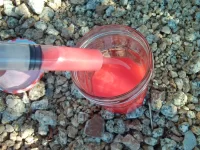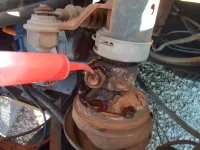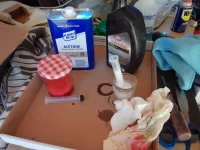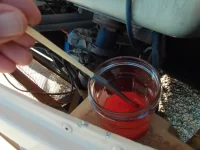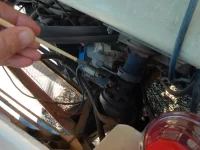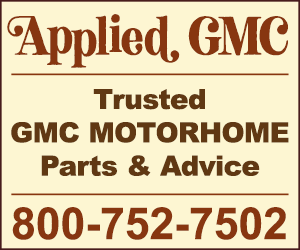Before Dave Lenzi came out with his masterpiece intermediate steering shaft, He advised me to get a new one from Cinnabar when I was looking to replace mine. Their price was certainly competitive, and it was (of course) a direct replacement.
Steering gear, intermediate shaft and slip joint replacement
- Thread starter Don Jaksa
- Start date
You are using an out of date browser. It may not display this or other websites correctly.
You should upgrade or use an alternative browser.
You should upgrade or use an alternative browser.
Dave Lenzi is 87 years old and works 7 days a week. Amazing guy
Last edited:
Yes he is, and yes he does. He's a GREAT guy too.Dave Lenzi is 87 years old and works 7 days a week
ATF/Acetone works. I have used it to free up stuck screw jacks that have sat in the rain for indeterminate periods (so super cheap at yard sales). Think 1 inch plus Acme threads; so very, very stuck. However, and this is a huge caveat given the context, the success was accomplished on a months long timeframe. Acetone will also evaporate quickly without intervention; aluminum foil wrap seems to work well.
So, over the years, the review articles are consistent. ATF/Acetone works well; Liquid Wrench works well; all products help; Kroil is not worth the money or time it takes to track down and seems more reputation than reality. Oh, and the people going on about ATF being wildly different than Power Steering Fluid are just embarrassing themselves as both are simply hydraulic fluid (tractor fluid would likely work exactly the same too). In fact, my Subaru specifies Dexron ATF for the power steering (Type F ATF is a different animal altogether; DO NOT let a mechanic put that stuff in your GM, or other non-old-Ford, transmission; doing so is an old-school mechanic's con to get the car moving out the door and collect payment. Type F is kind of stickier/grittier.)
On an exposed nut (like might be on a steering gear), a nut splitter works great (and don't reuse 50 year old bolts and/or nuts on ANYTHING that is required to keep you and yours on the pavement).
On bolts and screws, simply drilling a hole down the center seems to relieve the pressure between the thread surfaces, and the fastener will simply be removable in the normal way (most extractors seems to expand the fastener back out against the hole threads and can be counterproductive to a successful removal of the fastener). Left hand drill bits work great with the fastener often simply backing out, and Harbor Freight has a reasonably priced set (although they should realistically be considered one-time-use) (left-hand threads excepted, of course).
If the part is removable and smaller, put in in a freezer and get it as cold as possible. This works well on crusty steel fasteners stuck in aluminum (think motorcycle cases) and works less well on crusty steel fasteners stuck in zinc (AKA pot metal). Dry ice works too. Or even wait for a cold day if you are working in a location that gets cold.
Also, using a battery impact set at lower power (a good one, Milwaukee, DeWalt, or Makita, for consumers; there are good pro tools too) to sort of rock the fastener BOTH directions repeatedly can work really well. The shock and vibration are the trick here. A plain old wrench and a hammer can also work in the same way (wrenches meant to be hammered on exist, by the way; typically an industrial item).
These lessons tend to be learned the hard way, as stuck fasteners are a pain-in-the-neck, with no one method being really the "right one". Good luck.
So, over the years, the review articles are consistent. ATF/Acetone works well; Liquid Wrench works well; all products help; Kroil is not worth the money or time it takes to track down and seems more reputation than reality. Oh, and the people going on about ATF being wildly different than Power Steering Fluid are just embarrassing themselves as both are simply hydraulic fluid (tractor fluid would likely work exactly the same too). In fact, my Subaru specifies Dexron ATF for the power steering (Type F ATF is a different animal altogether; DO NOT let a mechanic put that stuff in your GM, or other non-old-Ford, transmission; doing so is an old-school mechanic's con to get the car moving out the door and collect payment. Type F is kind of stickier/grittier.)
On an exposed nut (like might be on a steering gear), a nut splitter works great (and don't reuse 50 year old bolts and/or nuts on ANYTHING that is required to keep you and yours on the pavement).
On bolts and screws, simply drilling a hole down the center seems to relieve the pressure between the thread surfaces, and the fastener will simply be removable in the normal way (most extractors seems to expand the fastener back out against the hole threads and can be counterproductive to a successful removal of the fastener). Left hand drill bits work great with the fastener often simply backing out, and Harbor Freight has a reasonably priced set (although they should realistically be considered one-time-use) (left-hand threads excepted, of course).
If the part is removable and smaller, put in in a freezer and get it as cold as possible. This works well on crusty steel fasteners stuck in aluminum (think motorcycle cases) and works less well on crusty steel fasteners stuck in zinc (AKA pot metal). Dry ice works too. Or even wait for a cold day if you are working in a location that gets cold.
Also, using a battery impact set at lower power (a good one, Milwaukee, DeWalt, or Makita, for consumers; there are good pro tools too) to sort of rock the fastener BOTH directions repeatedly can work really well. The shock and vibration are the trick here. A plain old wrench and a hammer can also work in the same way (wrenches meant to be hammered on exist, by the way; typically an industrial item).
These lessons tend to be learned the hard way, as stuck fasteners are a pain-in-the-neck, with no one method being really the "right one". Good luck.
To be fair, it cut the required torque by 54% according to the cited test. That's not nothing, and it's readily available and cheap. I use a lot of PB and had given myself the impression it worked better than WD-40 and Liquid Wrench.
I use a mixture of slightly used ATF (obtained from a serial dump and fill 'flush' treatment on an Acura RDX) thinned with WD-40 purchased by the gallon. That's dispensed from an oiler can. Works good, smells good, and it's basically free.
Spray cans of WD-40 make a great stocking stuffer!
My favorite use of WD-40 in a spray can is to light a campfire. Smells good, lights easily with a match, sticks around and burns a while and doesn't burn your face off like gasoline will.
I've also heard with reliability that WD-40 can be applied to a fishing lure as an attractant, believe it or don't!
ATF or PS fluid, same difference. You can use pretty much any oil, vegetable oil was used in one study and it performed well. The thinner the oil the better and ATF creeps like a mofo. Put some on the chassis frame rail near the bottom and watch it creep upwards over time.To be fair, it cut the required torque by 54% according to the cited test. That's not nothing, and it's readily available and cheap. I use a lot of PB and had given myself the impression it worked better than WD-40 and Liquid Wrench. Maybe I'll have to revisit Liquid Wrench for a while. IIRC it's cheaper than PB too. Spray cans certainly have value for portability and convenience, but I think a squirt can of ATF/Acetone warrants a prominent position in my shop.
Edit: Interestingly enough, there seem to be a lot of questions circulating as to the validity of that test. One thread even has someone claiming to be the original author stating he actually used PS fluid instead of ATF as he'd grabbed it by mistake at the auto parts store and didn't notice. Supposedly many readers had noticed the PS fluid in the article's photo and had been questioning this. That of course, leaves me with more questions.
One change of ATF is about a gallon, half of the home brew, a gallon of acetone is ~$23, so 2 gallons for less than $25. A 12 oz spray can of WD40 is ~$13...well over $200 more for the equivalent number of spray cans. The cans just get thrown away and the 'convenience' of not having to refill the home brew squirt can is hardly worth mentioning.
I agree with almost everything you wrote. Except for the part about never re-using 50 year old bolts.ATF/Acetone works. I have used it to free up stuck screw jacks that have sat in the rain for indeterminate periods (so super cheap at yard sales). Think 1 inch plus Acme threads; so very, very stuck. However, and this is a huge caveat given the context, the success was accomplished on a months long timeframe. Acetone will also evaporate quickly without intervention; aluminum foil wrap seems to work well.
So, over the years, the review articles are consistent. ATF/Acetone works well; Liquid Wrench works well; all products help; Kroil is not worth the money or time it takes to track down and seems more reputation than reality. Oh, and the people going on about ATF being wildly different than Power Steering Fluid are just embarrassing themselves as both are simply hydraulic fluid (tractor fluid would likely work exactly the same too). In fact, my Subaru specifies Dexron ATF for the power steering (Type F ATF is a different animal altogether; DO NOT let a mechanic put that stuff in your GM, or other non-old-Ford, transmission; doing so is an old-school mechanic's con to get the car moving out the door and collect payment. Type F is kind of stickier/grittier.)
On an exposed nut (like might be on a steering gear), a nut splitter works great (and don't reuse 50 year old bolts and/or nuts on ANYTHING that is required to keep you and yours on the pavement).
On bolts and screws, simply drilling a hole down the center seems to relieve the pressure between the thread surfaces, and the fastener will simply be removable in the normal way (most extractors seems to expand the fastener back out against the hole threads and can be counterproductive to a successful removal of the fastener). Left hand drill bits work great with the fastener often simply backing out, and Harbor Freight has a reasonably priced set (although they should realistically be considered one-time-use) (left-hand threads excepted, of course).
If the part is removable and smaller, put in in a freezer and get it as cold as possible. This works well on crusty steel fasteners stuck in aluminum (think motorcycle cases) and works less well on crusty steel fasteners stuck in zinc (AKA pot metal). Dry ice works too. Or even wait for a cold day if you are working in a location that gets cold.
Also, using a battery impact set at lower power (a good one, Milwaukee, DeWalt, or Makita, for consumers; there are good pro tools too) to sort of rock the fastener BOTH directions repeatedly can work really well. The shock and vibration are the trick here. A plain old wrench and a hammer can also work in the same way (wrenches meant to be hammered on exist, by the way; typically an industrial item).
These lessons tend to be learned the hard way, as stuck fasteners are a pain-in-the-neck, with no one method being really the "right one". Good luck.
If the bolts look good and aren't rusted, what's the problem? Excepting torque to yield bolts of course...
Don, it's a little bit rude to interrupt people hijacking your thread!Its Arizona guys, rust is not a problem here
When I install screws and bolts on my sailboat, I coat them with anhydrous lanolin, a non petroleum natural lubricant. It resists salt water and provides some resistance to galvanic corrosion such as a stainless steel fastener in an aluminum spar.ATF or PS fluid, same difference. You can use pretty much any oil, vegetable oil was used in one study and it performed well. The thinner the oil the better and ATF creeps like a mofo. Put some on the chassis frame rail near the bottom and watch it creep upwards over time.
One change of ATF is about a gallon, half of the home brew, a gallon of acetone is ~$23, so 2 gallons for less than $25. A 12 oz spray can of WD40 is ~$13...well over $200 more for the equivalent number of spray cans. The cans just get thrown away and the 'convenience' of not having to refill the home brew squirt can is hardly worth mentioning.
It is very sticky and attracts everything. Over time it will get very dirty but won't disappear.
When I have to replace a fitting, the fastener is never frozen.
It comes as a fluid or paste.
I usually dip the fastener in it before I install it.
I apologize in the most sincere way and promise never to interrupt a knowledge session again in this life or in the great beyond.Don, it's a little bit rude to interrupt people hijacking your thread!
It's ALL good and I appreciate the sharing of knowledge and experience demonstrated by the good folks who participate in this forum.
Now back to our regularly scheduled program...
Last edited:
When I install screws and bolts on my sailboat, I coat them with anhydrous lanolin, a non petroleum natural lubricant. It resists salt water and provides some resistance to galvanic corrosion such as a stainless steel fastener in an aluminum spar.
It is very sticky and attracts everything. Over time it will get very dirty but won't disappear.
When I have to replace a fitting, the fastener is never frozen.
It comes as a fluid or paste.
I usually dip the fastener in it before I install it.
Sounds like Fluid Film, which is also lanolin based
I apologize in the most sincere way and promise never to interrupt a knowledge session again in this life or in the great beyond.
It's ALL good and I appreciate the sharing of knowledge and experience demonstrated by the good folks who participate in this forum.
Now back to our regularly scheduled program...
I don't know if you were GMC inclined back a few years there was an email listserve. Now, if you want to talk about threads that rapidly went off the rails into the weeds, go back and read through some of those in the GMCNet Archives. OMG it was comical.
But back to your replacement of your steering box. My coach was from CA via TX and as I recall there was no major problem removing the box. Seem to recall the worst part was fishing a 1/2 drive socket on an extension into the frame through a hole to get on the mounting bolt head or nut(?) Nothing a breaker bar couldn't break free though.
While you're doing all this work, be sure to check the steering column lower bearing. Easy and cheap swap:
Post in thread '1976 Eleganza II'
https://www.gmcmotorhome.org/threads/1976-eleganza-ii.549/post-608033
Post in thread '1976 Eleganza II'
https://www.gmcmotorhome.org/threads/1976-eleganza-ii.549/post-608033
While you're doing all this work, be sure to check the steering column lower bearing. Easy and cheap swap:
Post in thread '1976 Eleganza II'
https://www.gmcmotorhome.org/threads/1976-eleganza-ii.549/post-608033
It's post #175 here: https://www.gmcmotorhome.org/threads/1976-eleganza-ii.549/page-9
What the heck, for the price it is a no brainerWhile you're doing all this work, be sure to check the steering column lower bearing. Easy and cheap swap:
Post in thread '1976 Eleganza II'
https://www.gmcmotorhome.org/threads/1976-eleganza-ii.549/post-608033
Crown Automotive steering column lower bearing, OEM Part Number 4487696K
On order from amazon
Amazon.com: Jeep CJ Wrangler YJ 1972-95 Steering Column Bearing Replacement Kit : Automotive
Buy Jeep CJ Wrangler YJ 1972-95 Steering Column Bearing Replacement Kit: Column Shaft - Amazon.com ✓ FREE DELIVERY possible on eligible purchases
www.amazon.com
Thanks Mr Wizard
so you unfreeze bolts with Coppertone SPF50Its Arizona guys, rust is not a problem here
The plastic syringe is interesting. I mainly use a throw away flux brush, but the syringe has some advantages.
Nicely detailed Sailor Man level post, Don... or should it be Desert Man?

